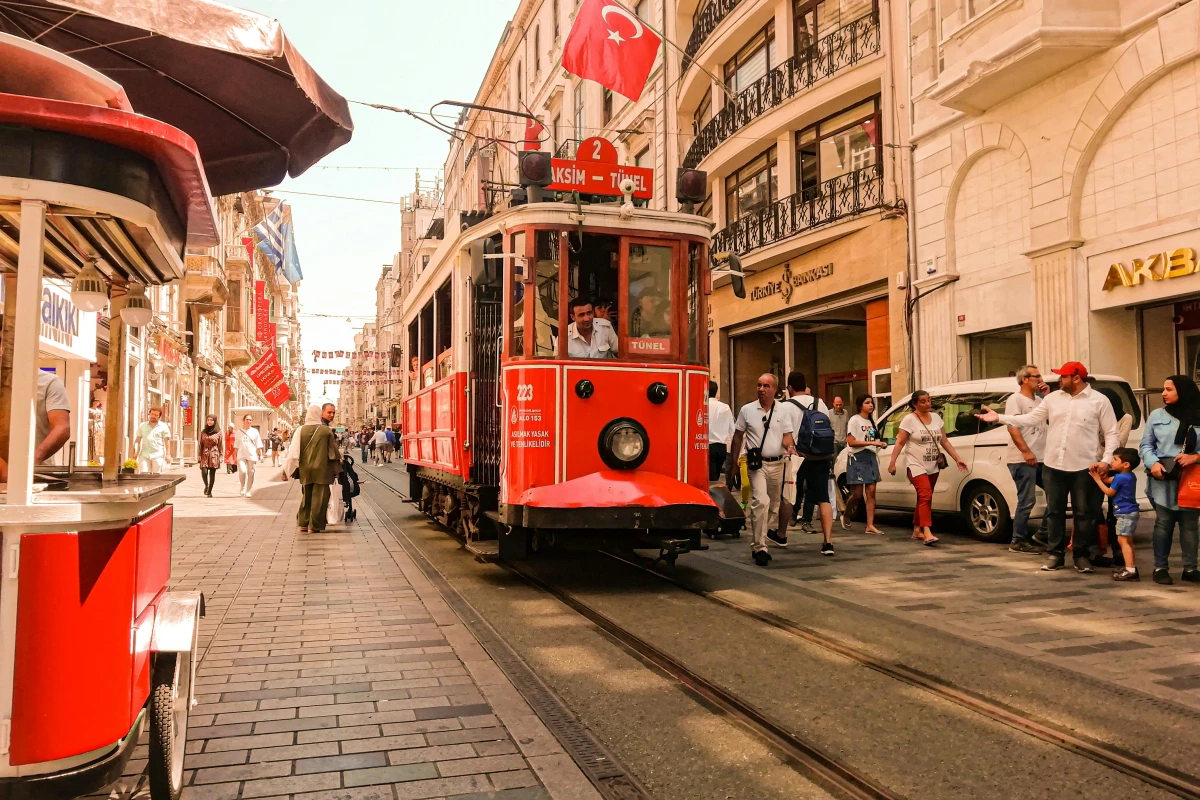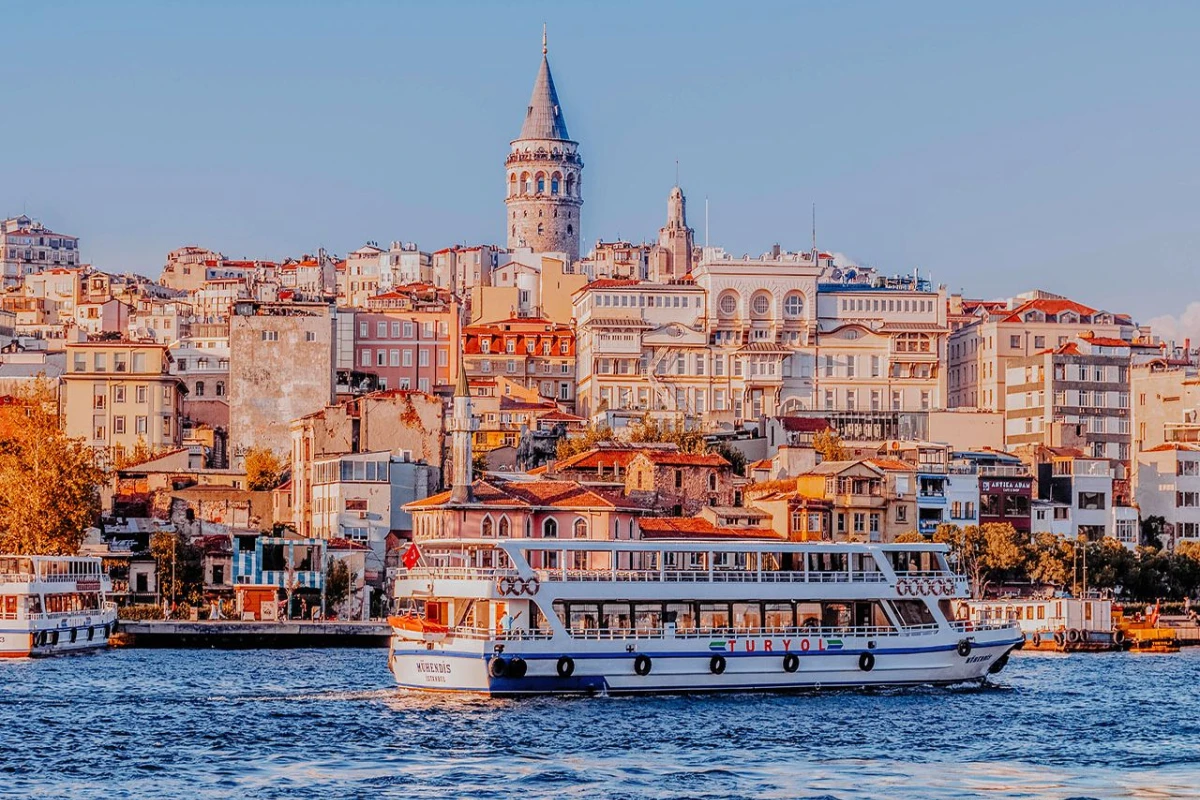Whirling dervishes are quickly becoming one of the most captivating cultural experiences for visitors in Turkey. But what makes this centuries-old ritual so popular among modern-day tourists? Let’s explore the spiritual and cultural roots behind this mesmerizing ceremony!
What is Sufism?
Sufism is a mystical path within Islam, not a separate religion or sect. It focuses on inward reflection, aiming to bring the individual closer to God through personal transformation. The primary goal of Sufism is to detach oneself from the ego, known as nafs in Arabic. They are widely recognized for their commitment to love, tolerance, and a universal approach to spirituality. The Sufi tradition gave rise to many well-known poets and mystics, such as Rumi, al-Hafez, and al-Ghazali. However, Rumi is one of the most influential figures in Turkish and world history. Here is why.
Who is Rumi?
Jalal ad-Din Muhammad Rumi, born in present-day Afghanistan, was a 13th-century Persian poet, Islamic scholar, theologian, and Sufi mystic. He spent most of his life in Konya, now in Turkey, and is widely regarded as one of the most influential spiritual figures in history.
Rumi is best known for the Masnavi, a poetic collection of nearly 50,000 verses that explores themes such as divine love, spiritual longing, and the soul's journey toward God. His words emphasize love as a path to unity with the Divine, transcending religious, cultural, and linguistic boundaries.
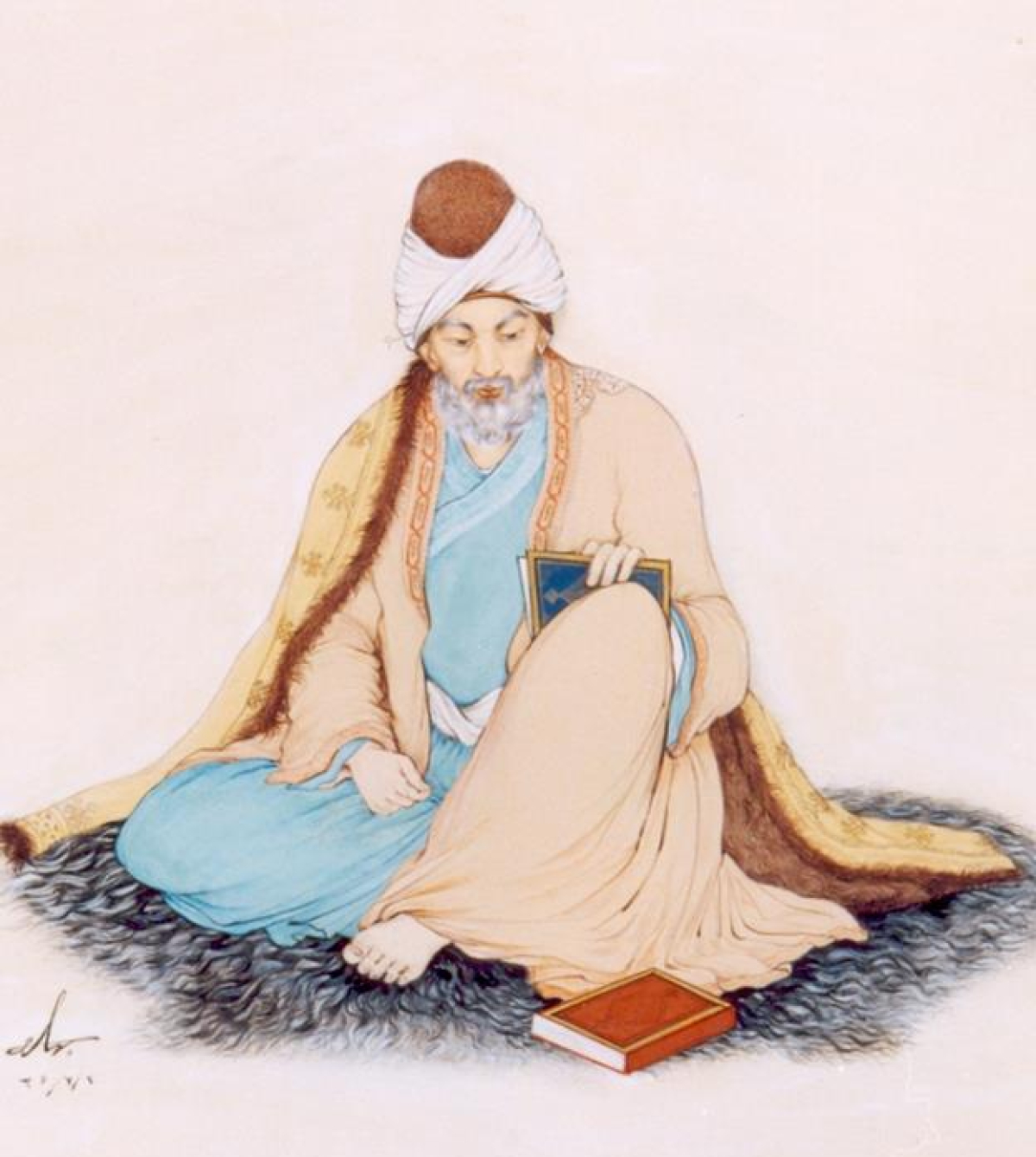
The portrait of Rumi was made by an Iranian artist, Hossein Behzad
Rumi's teachings gave rise to the Mevlevi Sufi order, known for their practice of whirling as a form of spiritual meditation. His influence reaches beyond literature, shaping music, dance, and philosophy.
Emerging from a period of cultural fusion that spanned from China to the Mediterranean, Rumi’s vision was shaped by turmoil, displacement, and profound introspection. Yet his message remains timeless: a call to light, love, maturity, acceptance, and openness.
Why Tourists are Drawn to the Whirling Dervish Ceremony?
The Whirling Dervish Ceremony, also known as Sema, is more than a performance; it’s a spiritual ritual. Its hypnotic rhythm, flowing robes, and poetic symbolism offer travelers a unique window into the soul of Sufism. Sema means “to listen” in Arabic, in that there is a reference to the ney (reed flute).
Whether you're curious about Islamic mysticism or seeking a deeply moving cultural experience, the whirling dervish ritual is sure to leave a lasting impression.
Would you like to know more about the Whirling Dervish ceremony? Keep reading this post!
A Path of Love and Inner Peace
At its core, Sufism emphasizes love, humility, and universal spirituality. Sufi teachings guide followers to open their hearts, overcome self-centeredness, and love all beings for the sake of the Creator.
This philosophy is beautifully captured by two of the most iconic Sufi figures in Turkish history:
Rumi: “Come, come whoever you are.”
Yunus Emre (featured on Turkey’s most valuable banknote): “Love the created for the creator's sake.”
What Should You Know About the Whirling Dervish Ceremony?
The Whirling Dervish Ceremony is not just a visual spectacle; it’s a deeply spiritual ritual that helps humanity comprehend that God reveals Himself in all creatures. This practice is a form of active meditation, where dervishes spin in a symbolic dance that reflects a mystical journey toward inner maturity and unity with the Divine.
Symbolism in Every Detail
Dervishes wear distinctive garments, each piece carrying symbolic meaning:
- White robes with wide skirts represent the shroud of the ego
- A black cloak symbolizes worldly attachments.
- The tall conical hat stands for the tombstone of the self.
As they whirl, their right hand is turned upward to receive blessings from the heavens, while their left hand faces downward, passing those blessings to the earth, thereby embodying the idea of being a bridge between the spiritual and material worlds.
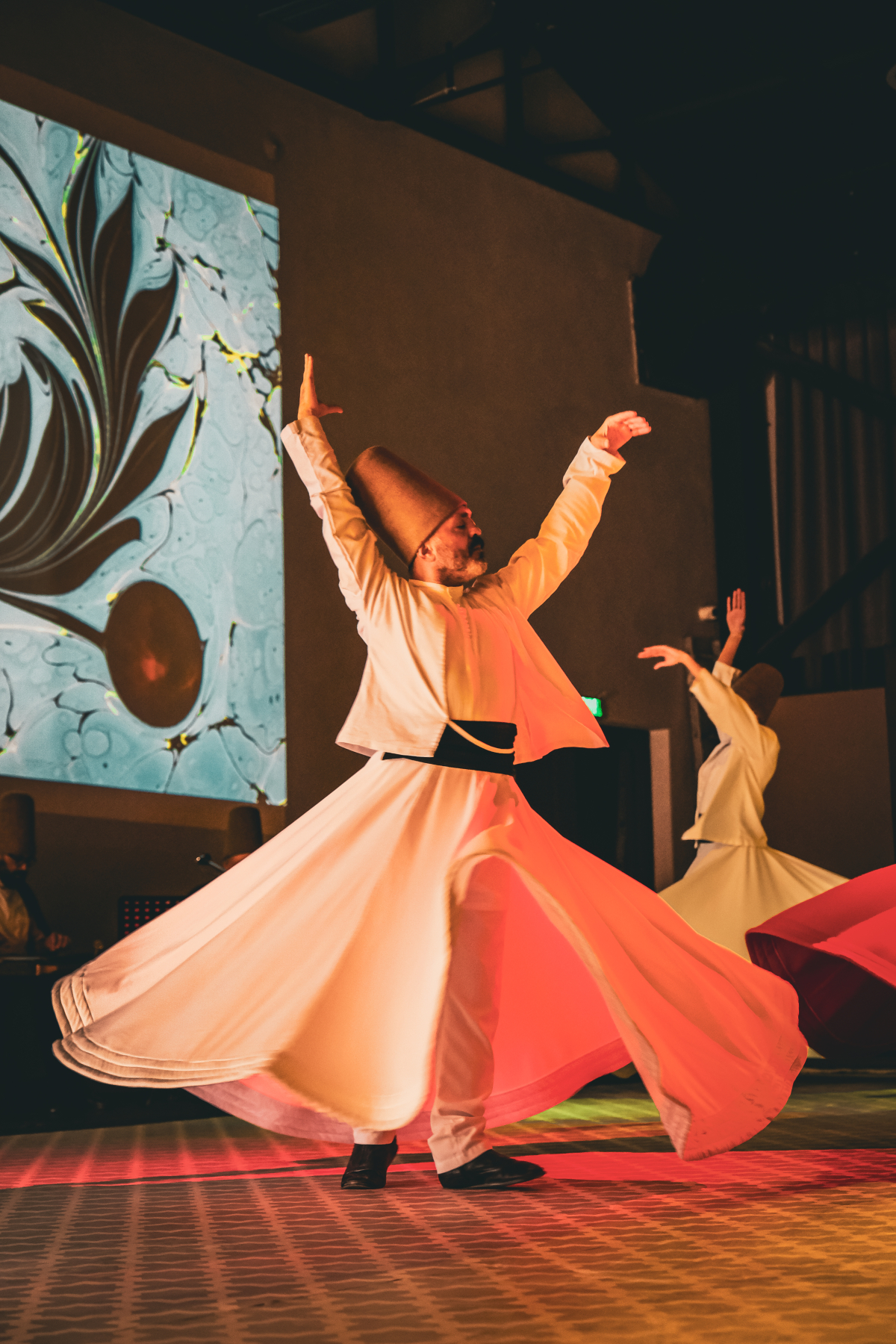
A whirling dervish (Semazen in Turkish) with a white dress and a tall conical hat
The Flow of the Ceremony
The Sema ceremony unfolds in several phases. It begins with prayers and traditional music, performed live by a small ensemble. Then comes the whirling, which is structured into four distinct parts, each marking a stage in spiritual awakening:
First part: Recognition of one’s physical limitations as a human being. This is where dervishes sing poems of Rumi in Persian. It shows the evolution of creation from the Unity: the universal intelligence, the soul of the cosmos, the spheres of the planets, minerals, vegetation, animals, and eventually man are differentiated.
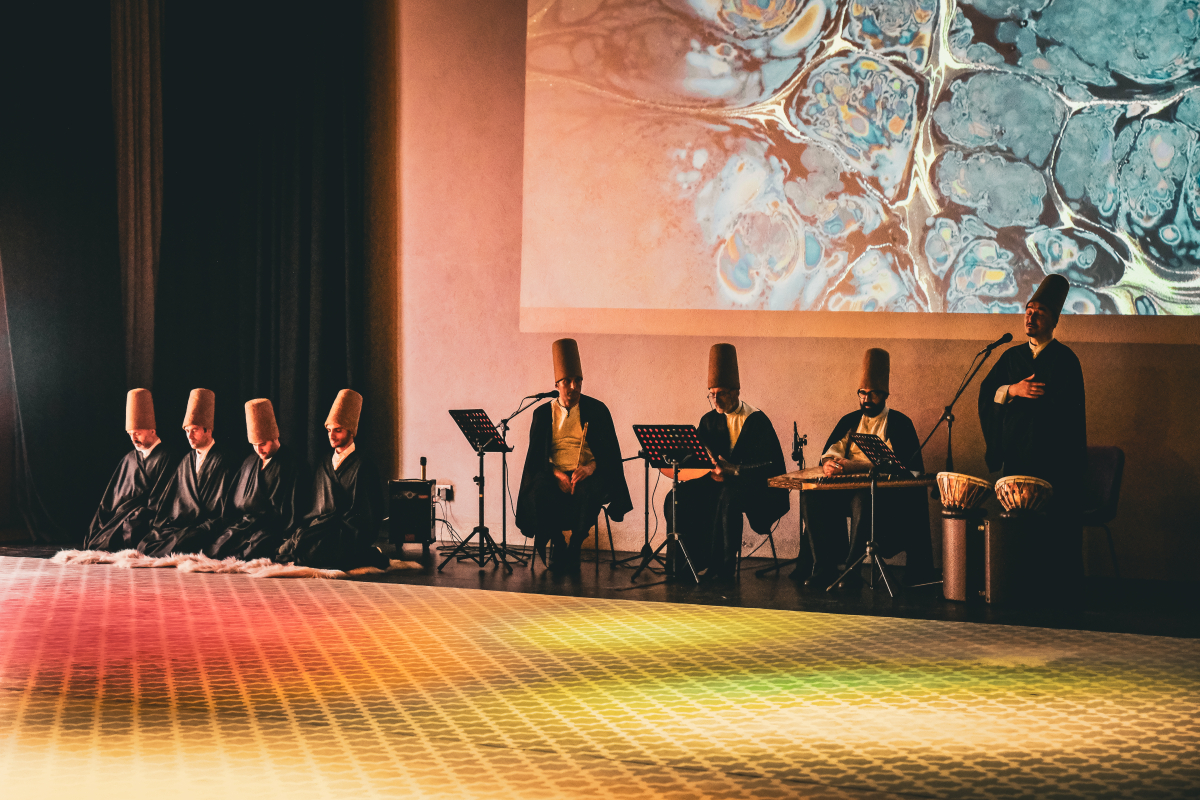
A scene from the first part of the whirling dervishes. Musical instruments from left to right: ney, ud, qanun, qudüm
Second part: This is a moment of wonder, confronting the vastness of creation and the universe. This turning refers to man's elevation to God via mystic practice. They pay tribute to Rumi, the founder of Sufism in Turkey in the 13th century, by bowing to a red carpet.
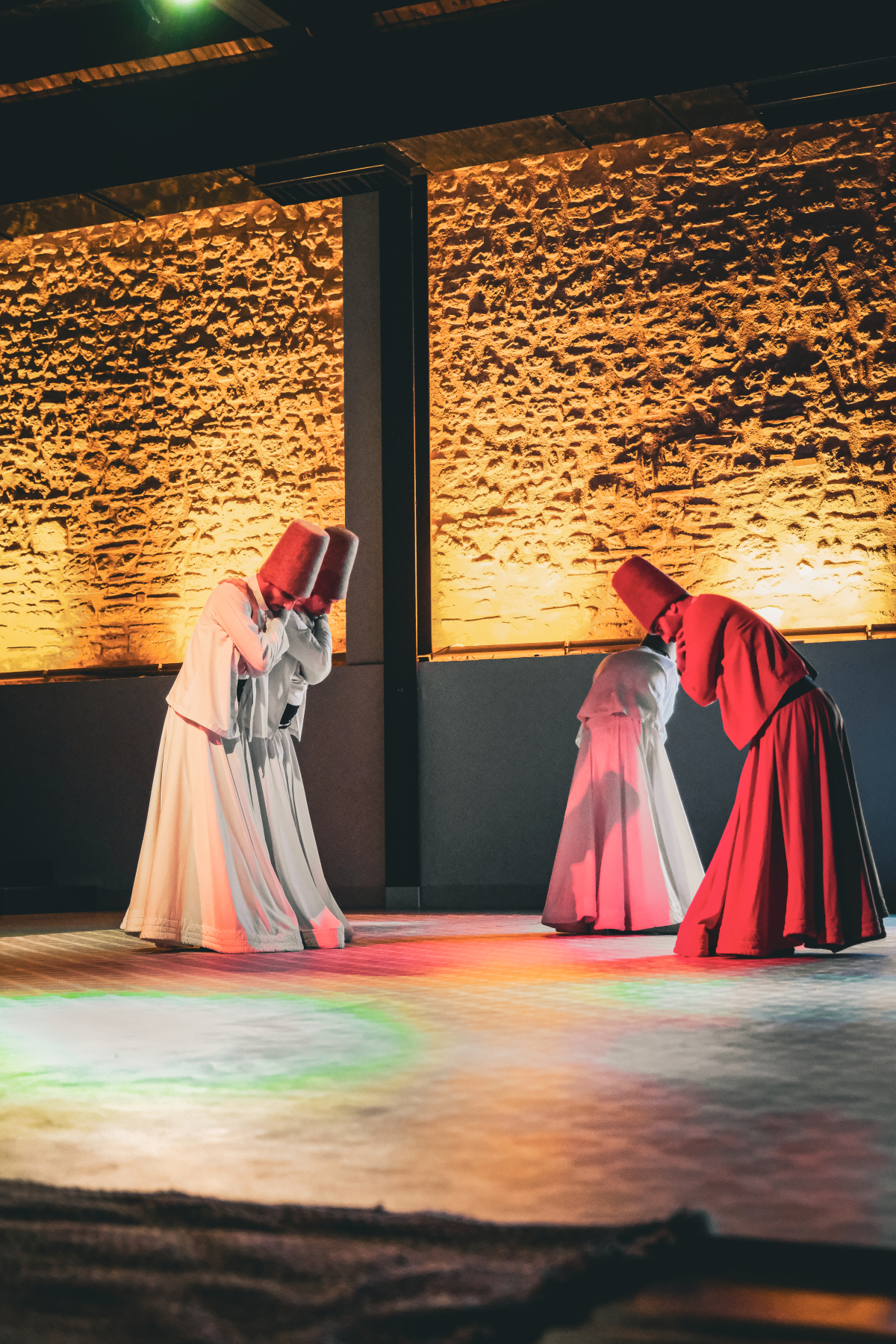
At the second stage, whirling dervishes begin to salute each other, and then the red carpet, the one who is directed towards it.
Third part: Harmony with the world, as the rhythm of the music intensifies. It is annihilation in God, which represents the highest level of certainty: 'In dying, you have liberated yourself from death; by annihilation, you have found me again'. This is the part where the whirling section begins.
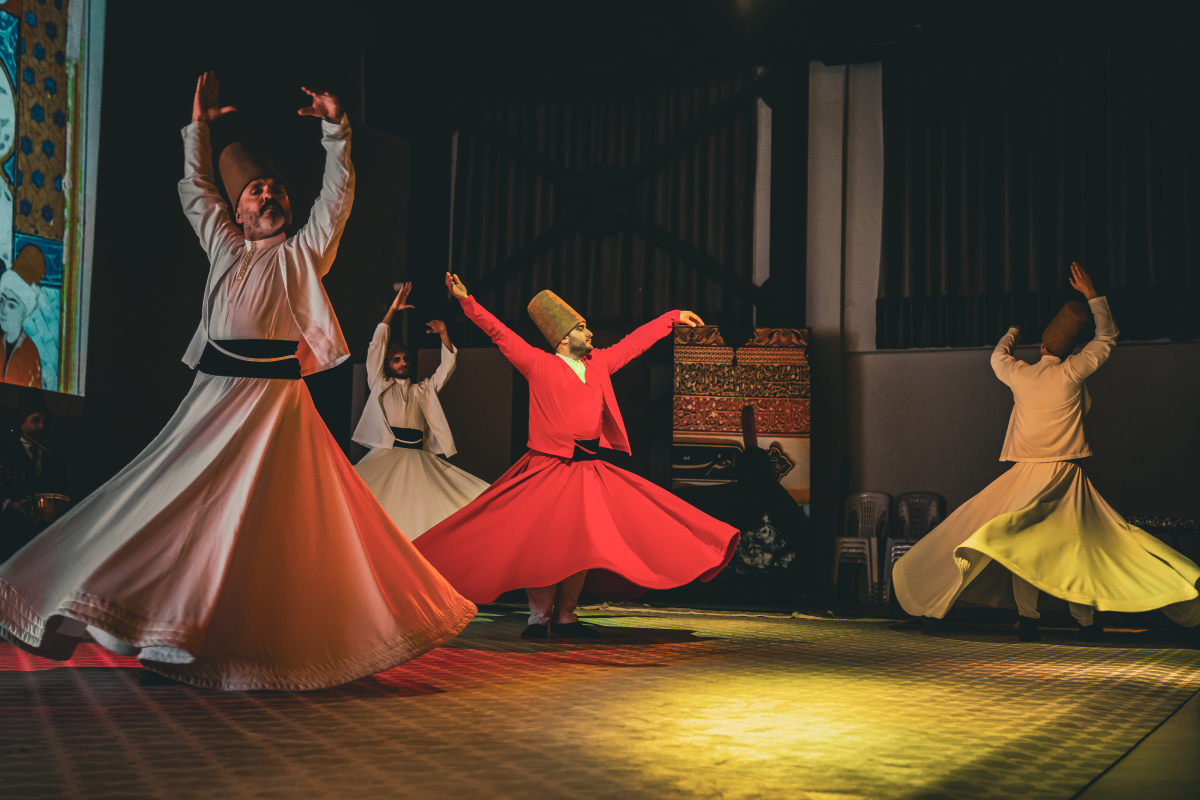
At the third stage, dervishes whirl even faster, and they raise their right hand and lower their left hand.
Fourth part: Spiritual independence, the ability to whirl even without music. This last turning restores the everlasting order, since God also turns.
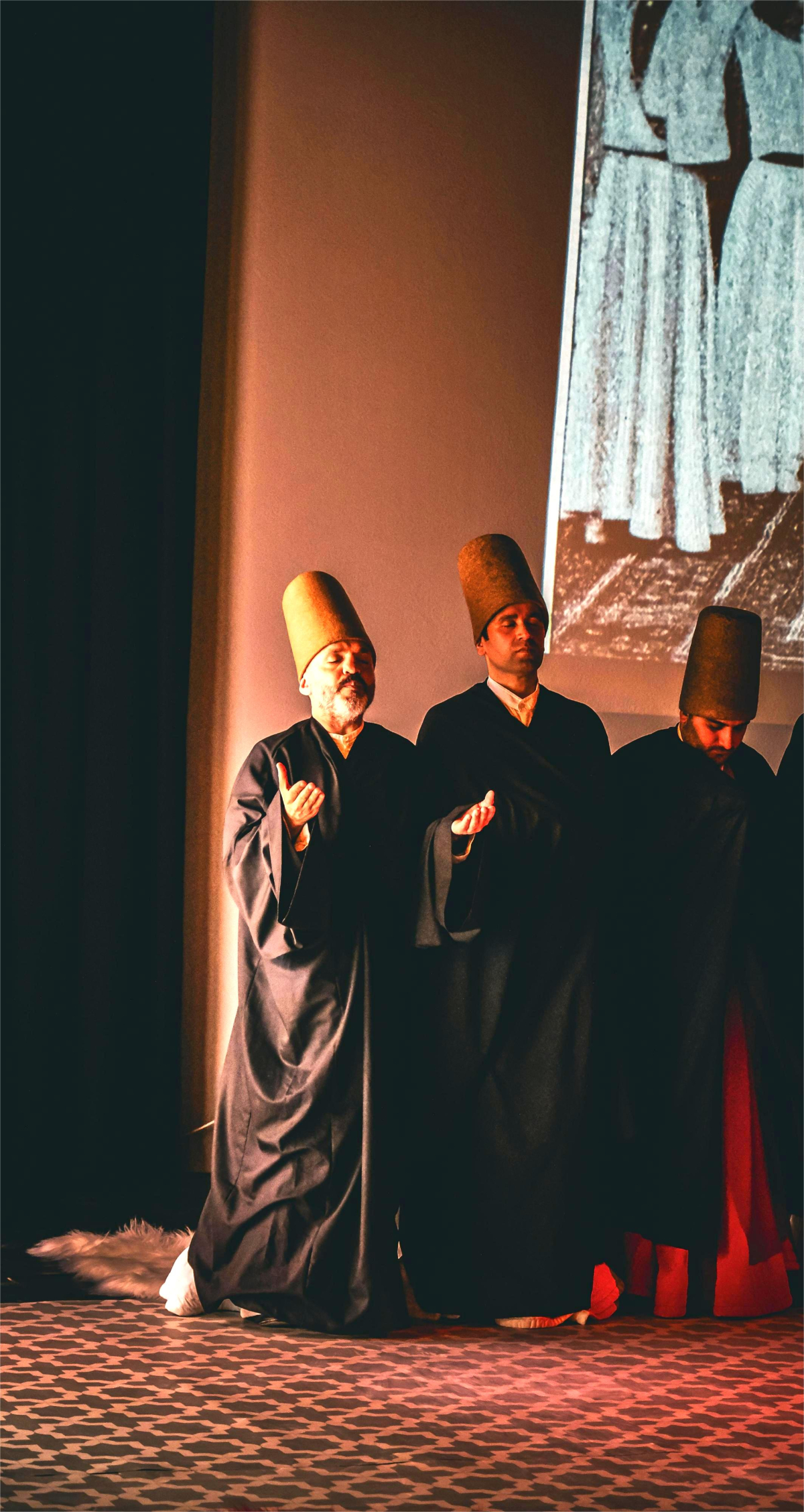
In the last stage, dervishes pray in Turkish with much borrowed vocabulary from Persian and Arabic.
Short breaks between these stages are filled with salutations, reflecting the soul's progression on its path toward wisdom.
A Ceremony in Three Languages
The Turkish Mevlevi tradition, inspired by Rumi, blends three languages in the ritual:
Persian for poetic recitations,
Arabic for Qur’anic citations,
Turkish for community prayers and final blessings.
This multilingual structure emphasizes the universal nature of Sufi philosophy and its inclusive spiritual message.
What makes the Cogito experience unique?
Cogito places high importance on working with local communities, including foundations. We are part of the Yücel Cultural Foundation, a non-profit NGO that provides scholarships for disadvantaged students.
We collaborate with the authentic Sufi community, upholding principles that have been followed for centuries. Therefore, this is not a clickbait show like the ones commonly seen on the internet. Instead, you will become a genuine spectator of Turkish-Islamic tradition.
Last but not least, our venue is located in the Abud Efendi Mansion, a UNESCO World Heritage site. You can reach our foundation with just a two-minute walk from Hagia Sophia, it's right next to it!



